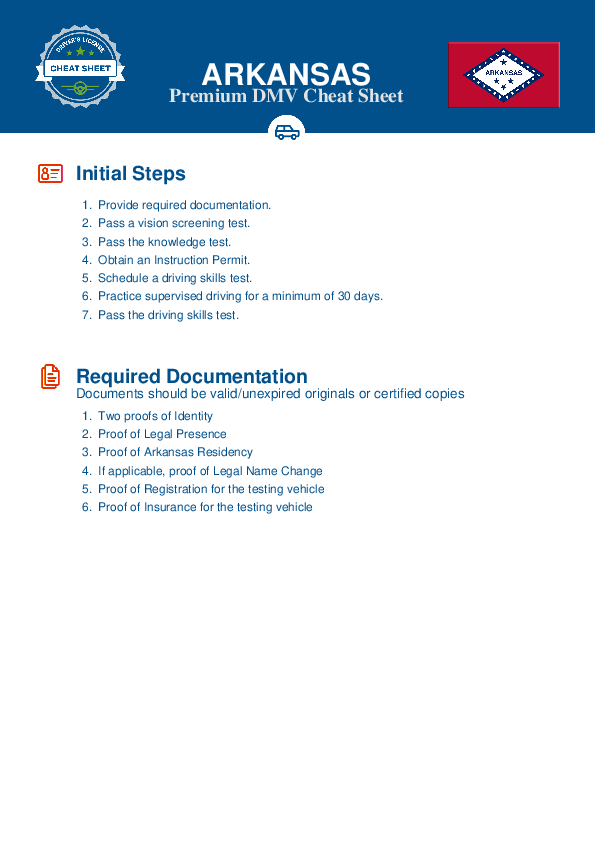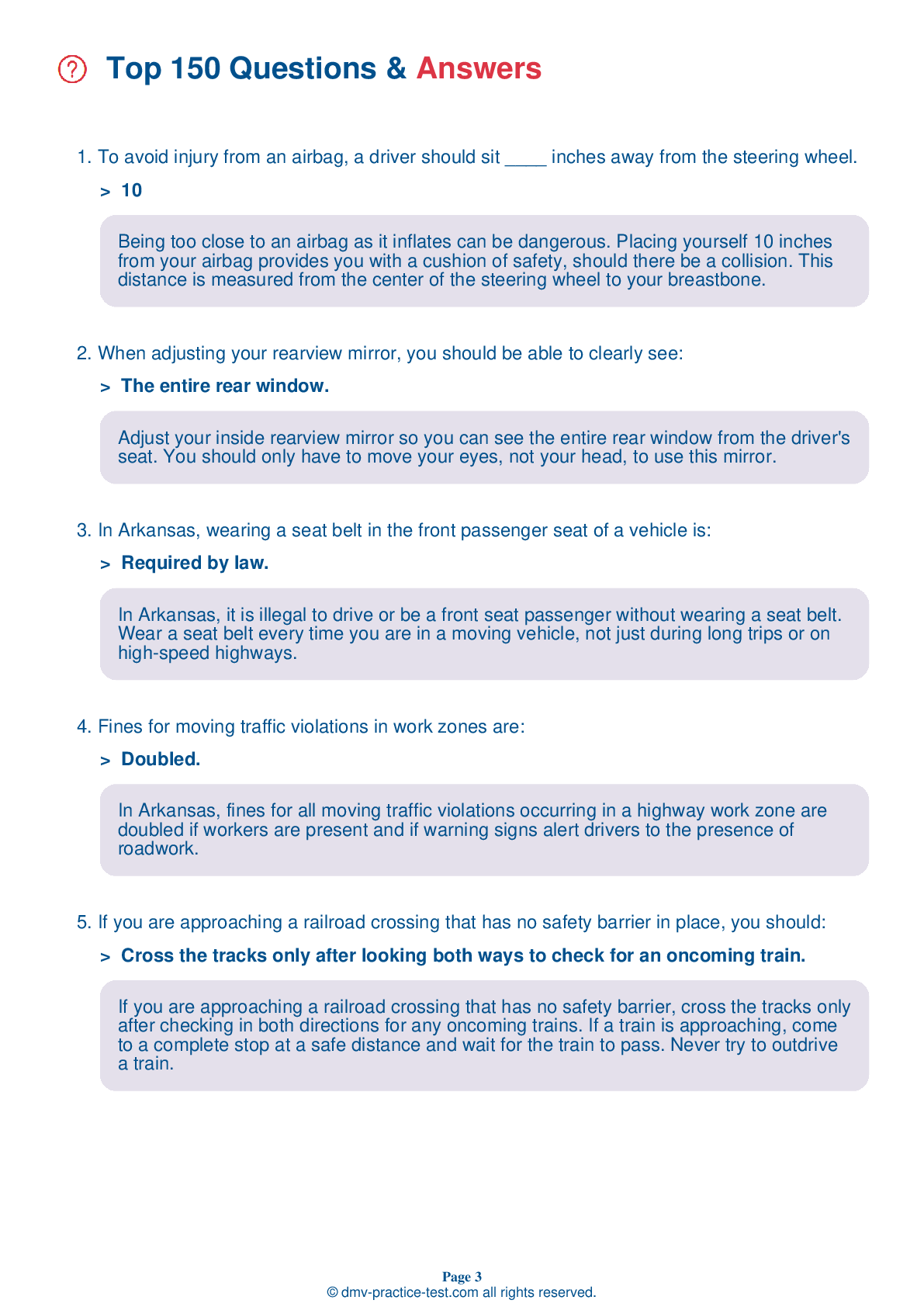FREE Arkansas DMV Practice Test #23 Page 2 of 3
This Arkansas DMV practise tests was recently updated for January 2025. It includes questions based on the 2025 Arkansas Driver Handbook's most essential traffic signs and restrictions. Use actual questions that are very similar (often identical!) to the DMV driving permit test and driver's licence exam to study for the DMV driving permit test and driver's licence exam.
To help you remember the concepts, each practise test question includes a recommendation and explanation. The written component of the official DMV test will include questions about road rules, traffic signs, and driving statutes, as well as information from the Driver Handbook.
To receive the required passing grade, you must correctly answer 20 out of 25 questions. Take our DMV practise exam to help you prepare for your Arkansas instruction permit or driver's licence.
The DMV exam is available in multiple languages.
Using any form of testing aid will result in an automatic fail, and the DMV may take further action against your driver's licence, so don't do it.
9 . Under ideal driving conditions, you should maintain a following distance of at least:
To avoid driving too closely to the vehicle in front of you, use the two-second rule. When the vehicle in front of you passes a stationary object, begin counting. If the front of your vehicle reaches the stationary object before you finish counting to two, you are too close to the next vehicle.
10 . You are approaching an intersection where a traffic signal is displaying a steady yellow light. If you have not already entered the intersection, you should:
At an intersection controlled by a steady yellow light, you should bring your vehicle to a safe stop. If you are already within the intersection when the light changes from green to yellow, continue through the intersection at a safe speed.
11 . If it is necessary to make an emergency stop while driving on an interstate, you should:
If you must stop on the shoulder of the interstate or highway, turn on your emergency flashers to warn other drivers and stay inside your vehicle, if you can. The extremely high speed of traffic makes standing or walking along an interstate highway very dangerous.
12 . Reaction time is slower after:
Alcohol slows your reflexes and reaction time, reduces your ability to see clearly, and makes you less alert. As the amount of alcohol in your body increases, your judgment worsens and your driving skills decrease. You will have trouble judging distances, speeds, and the movement of other vehicles.
13 . To pass on a two-lane road, you should:
It can be hard to judge the speed of oncoming vehicles. They do not always seem to be coming as fast as they really are. Always be sure you can safely change lanes when passing on a two-lane street. If you are not sure of an oncoming vehicle's speed, wait to pass until the oncoming vehicle has passed and you are sure there is enough space for you to change lanes safely.
14 . When backing up:
When backing up, place your right arm on the back of the passenger seat and look directly through the rear window. Do not depend on your rearview or side mirrors as mirrors do not show directly behind your vehicle. Only drive in reverse at a low speed.
15 . If you are being followed too closely on a two-lane road:
If you are being followed too closely by another driver, merge into a different lane. If there is no lane available for merging, wait until the road ahead is clear and slowly reduce your speed. This will encourage the tailgater to drive around you.
16 . A dashed white line down the center of a two-lane road indicates that:
When a line separating lanes of traffic is dashed, drivers may cross the line to pass or change lanes. White lines separate lanes of traffic moving in the same direction.
See the exact questions that will be on the 2025 Arkansas DMV exam.
99.2% of people who use the cheat sheet pass the FIRST TIME
LT gives us an insight on how the cheat sheet provided her with all the study questions she needed before taking her test.
Joe initially studied with the handbook and failed his test, he eventually found us online, studied and pass his test the first time around.



